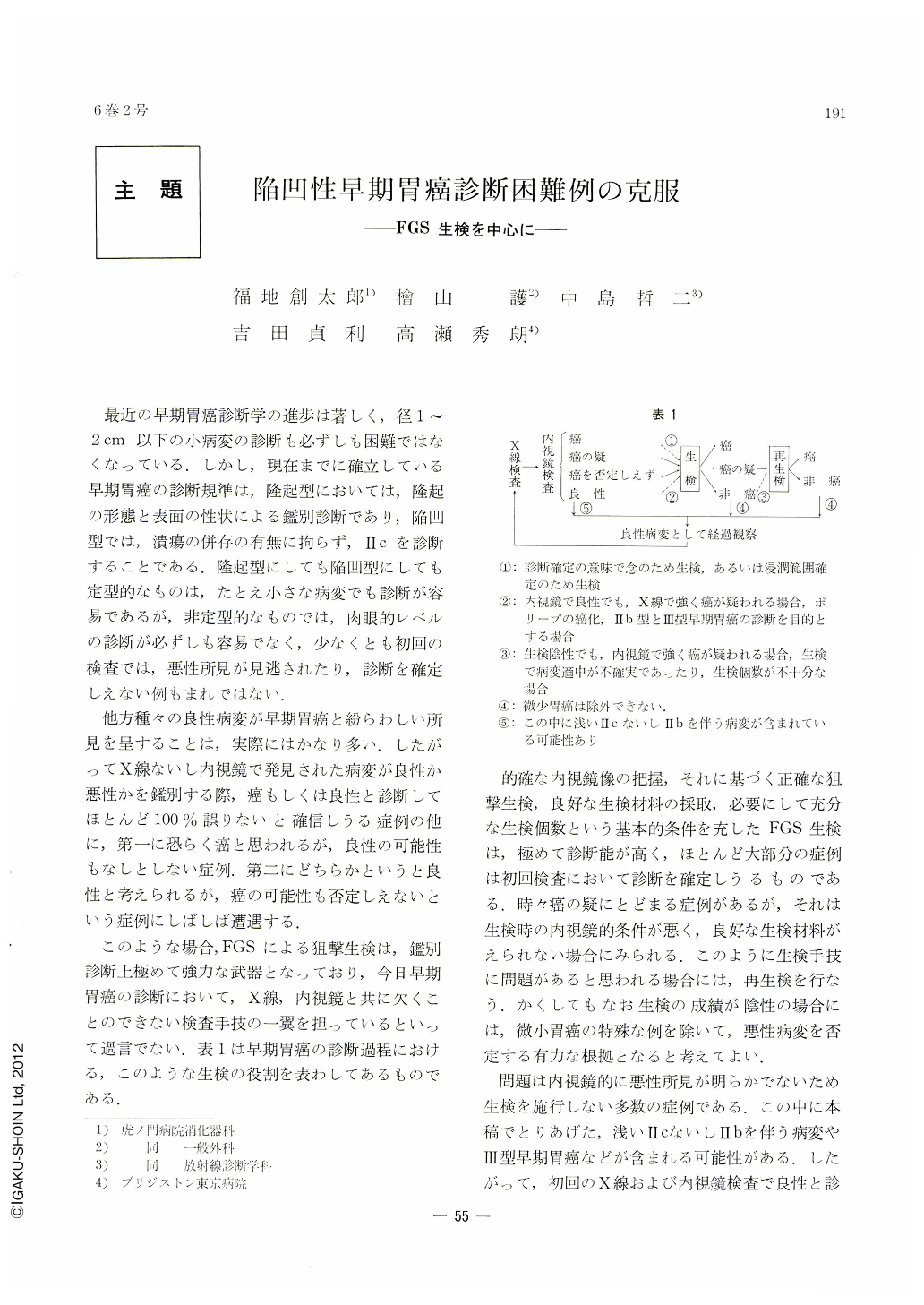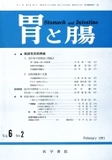Japanese
English
- 有料閲覧
- Abstract 文献概要
- 1ページ目 Look Inside
最近の早期胃癌診断学の進歩は著しく,径1~2cm以下の小病変の診断も必ずしも困難ではなくなっている.しかし,現在までに確立している早期胃癌の診断規準は,隆起型においては,隆起の形態と表面の性状による鑑別診断であり,陥凹型では,潰瘍の併存の有無に拘らず,Ⅱcを診断することである.隆起型にしても陥凹型にしても定型的なものは,たとえ小さな病変でも診断が容易であるが,非定型的なものでは,肉眼的レベルの診断が必ずしも容易でなく,少なくとも初回の検査では,悪性所見が見逃されたり,診断を確定しえない例もまれではない.
他方種々の良性病変が早期胃癌と紛らわしい所見を呈することは,実際にはかなり多い.したがってX線ないし内視鏡で発見された病変が良性か悪性かを鑑別する際,癌もしくは良性と診断してほとんど100%誤りないと確信しうる症例の他に,第一に恐らく癌と思われるが,良性の可能性もなしとしない症例.第二にどちらかというと良性と考えられるが,癌の可能性も否定しえないという症例にしばしば遭遇する.
Diagnostic criteria for protruded type of early gastric cancer are based on the differentiation of the forms of protrusion and nature of the affected mucosal surface, while those in depressed type depend after all in the accurate diagnosis of Ⅱ lesion regardless of the presence or absence of coexistent ulcer. Therefore, even a very small cancer lesion is easily diagnosed when it shows proper characteristics. Contrariwise, diagnostic difiiculties at the macroscopic level are often encountered in atypical cancer lesion, Added to this, various benign lesions are sometimes hard to distinguish from malignant ones. In such cases, FGS biopsy provides a very efficient diagnostic weapon for the examiner. Except for a few special cases of minute cancer lesion, negative result of biopsy affords, provided that it has been done in strict conformity with accurate technics, convincing grounds for denying malignancy in the lesion in question. Of greater importance and problematical are non-biopsied cases, including possibly atypical superficial cancer lesion or very minute one, nonbiopsied all because malignant findings were not so apparent. Even an established benign lesion, therefore, should also be subjected to periodic follow-up. The moment any suspicious finding is found in benign lesions, vigorous biopsy must be performed.
Among hard-to-diagnose cases in depressed type of early gastric cancer, Ⅲ and Ⅲ+Ⅱc types come foremost which have localized cancer lesion in a part of co-existent ulcer margin. The former can possibly be correctly diagnosed for the first time by biopsy, but biopsical diagnosis itself depends in a great measure on chance. In the latter, cancer may be confirmed when biopsy is done even on slight changes, as for instance, erosion at the margin of ulcer. Nextly, those changes are hard to diagnose which are associated with ill-defined shallow Ⅱc or Ⅱb seen around ulcer. In such cases, the nature of ulcer as such is hard to discriminate from that of benign ulcer. Especially when ulcer is in an acute stage of aggravation, shallow Ⅱ in its vicinity is apt to be overlooked. On the other hand, there are many cases that are confirmed by biopsy in the course of follow-up when signs suggesting of malignancy become apparent. Thirdly, those differentiated adenocarcinomas are hard to confirm which show shallow depression without any mucosal convergence with its marginal mucosa slightly protruded like petals of chrysanthemum. Mucosal unevenness is often seen associated with intestinal metaplasia of the surrounding mucosa. When the stomach is over-distended, these changes may become less conspicuous. Tactical observation of the stomach by regulating the amount of air in it is advisable.
Four cases of depressed type early gastric cancer, hard to diagnose and finally confirmed as such by biopsy, are described.

Copyright © 1971, Igaku-Shoin Ltd. All rights reserved.


